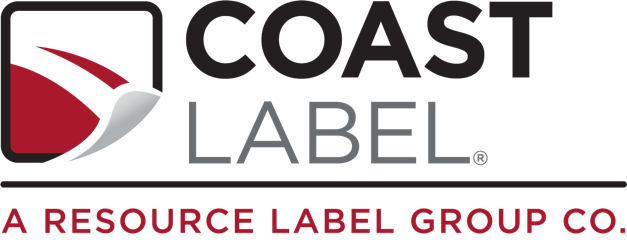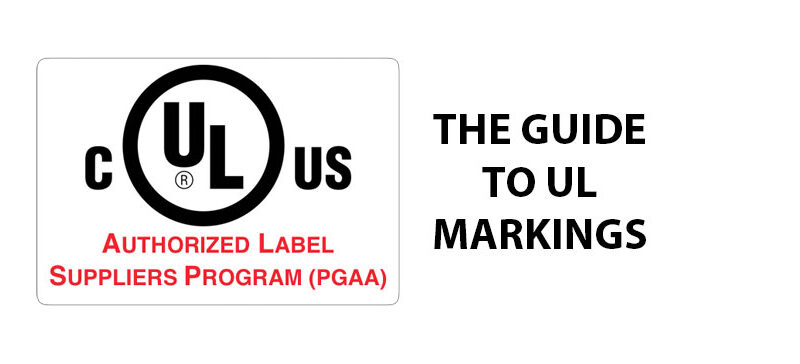If you’ve ever looked closely at an electrical appliance, power tool, or building material, you’ve probably seen a small “UL” symbol stamped somewhere on the label. While it may seem like a minor detail, the UL mark carries a lot of weight. Issued by Underwriters Laboratories, UL markings signify that a product has been tested and meets rigorous safety standards.
Looking to learn more about UL marks and what they mean? In this guide, we’ll break down the different types of UL marks and help you understand why this symbol is one of the most trusted in the industry.
UL Markings
Since 1894, Underwriters Laboratories, or UL, has been dedicated to advancing product safety and innovation. UL has updated its certifications over the years, and today, there are three main types of UL certification marks: legacy, enhanced, and smart marks.
- Legacy: The legacy mark is the one you’re probably used to seeing as it’s been in use for a while. It includes the UL symbol with the word “LISTED,” “CLASSIFIED,” or “RECOGNIZED,” depending on the specific certification. The legacy UL mark demonstrates that a product is UL certified and fulfills certification requirements. However, UL is moving away from the legacy marks in favor of the enhanced or smart marks.
- Enhanced: Similar to the legacy mark, the enhanced mark includes the UL symbol and the word “CERTIFIED,” but it also provides more information. Enhanced marks include the country code, the attribute it was tested for, and, optionally, a unique ID.
- Smart: The smart UL mark carries the same markings as an enhanced mark, with the addition of a QR code. By scanning the QR code, customers or inspectors can access certification information instantly.
If you’re already using a legacy UL mark, you can switch to the enhanced or smart mark for no cost. For newer certifications, the enhanced or smart mark is typically preferred. It provides more information than the legacy mark for enhanced transparency.
What Do They Mean?
UL is a global safety certification company that develops, publishes, and tests for standards relating to safety. The UL mark shows that a product has been tested and certified by UL for safety, performance, or another set of standards.
So why is the UL mark such a big deal?
UL markings show consumers that your product has gone through a rigorous development, testing, and inspection process and has been approved by UL. It’s a mark of safety and trustworthiness, and many consumers will only purchase products with the UL mark. In fact, not having one can be a red flag for low-quality or non-compliant products.
How to Use Them
Once you’ve gone through the challenging process of becoming UL certified, you’ll be able to display the UL mark on your products. But to stay UL compliant, you’ll need to make sure you’re using the marks as they’re supposed to be used. Here are some tips for correctly using the UL mark:
- You can only use the UL mark once you’ve been fully certified. UL does not allow you to mention that you’re going through the certification process in any of your promotions or advertisements.
- Once approved, UL will provide you with the appropriate artwork to use in your UL labels. You should not try to recreate the UL mark or any of its components.
- One of the benefits of UL certification is that you can use the certification as part of your marketing. The UL mark shows consumers that your organization is trustworthy and reliable, which can help you stand out from your competition. For specific guidelines on marketing with your UL mark, visit the UL marks and label hub.
- If using the enhanced or smart UL mark, you’ll need to customize it using the online design tool offered by UL.
The Country Codes
Both the enhanced and smart UL marks use two-digit ISO country codes to show which country’s standards were used for certification. Products that were certified for multiple countries may include multiple country codes. Some certifications, however, won’t use the country code at all. Once certified, you’ll be given the necessary guidelines for your UL mark.
Here are some of the most common country codes you might see on a UL Mark:
- AE: United Arab Emirates
- AU: Australia
- CA: Canada
- CN: China
- CO: Colombia
- EU: Europe
- SG: Singapore
- UK: United Kingdom
- US: United States
The Barcode Country Code Guide
UL Label Specifications
In order to be UL compliant, UL labels must meet the following specifications:
- Enhanced marks must be at least 5mm.
- Smart marks must be at least 13mm.
- UL labels must be printed in either black ink on a light background or white ink on a dark background.
- You must follow the font and proportion guidelines set by UL, which are typically given to you once you’ve been certified by UL.
UL Mark Requirements
Enhanced and smart marks require the following components:
- UL symbol: This includes the basic UL symbol contained in a circle with the word “CERTIFIED” below.
- Attribute: The attributes that were tested could include safety, performance, functional safety, security, marine, sanitation, health effects, signaling, or energy.
- Country codes: The ISO country code of the region whose standards were used for testing.
- Unique identifier: A unique number that helps with traceability and provides more information about the certification.
- QR code: For smart marks, a QR code must be included, providing a link to more info about the certification. It must be printed or provided in a format that can be accurately scanned.
UL Label Requirements
UL label requirements are strict because they ensure that certified products are properly marked for safety, traceability, and compliance. If you’re printing or applying UL marks, here’s what you need to know:
- Only products that have passed UL testing and are covered under a UL certification can bear the UL mark.
- Labels must be printed by UL-authorized printers, such as Coast Label, or follow UL’s specific label approval process.
- Label stock must be durable enough for the product’s environment.
- Adhesive must be strong enough to stay attached during normal use.
- Ink must be durable enough to resist fading, abrasion, chemical, or heat, depending on use case.
- The UL mark must be clearly visible, legible, and permanently affixed to the product.
- Placement should be on a part that isn’t normally removed or subject to wear and tear.
Are UL Marks Legally Required?
Strictly speaking, UL marks are not legally required by federal law. However, they often become effectively mandatory because of local codes, industry standards, and insurance requirements. For example, many building codes, electrical codes (like the NEC), and fire codes require products to be tested by a Nationally Recognized Testing Laboratory (or NRTL). While UL isn’t the only NRTL, it is one of the most common.
Some common products that often require a UL or equivalent certification include:
- Electrical products, like outlets, panels, and lighting
- Building materials, like fire-rated doors and wiring
- Appliances and consumer electronics
- Industrial equipment
In these cases, inspectors, buyers, or code enforcement typically look for a UL mark or equivalent before approving use or installation.
If you’re manufacturing or installing products, it’s smart to use UL-certified components or get your product certified by UL or another NRTL.
UL Mark Conclusion
While not always legally required, UL certification can play a critical role in meeting code requirements and passing inspections. More importantly, the UL mark demonstrates to your customers that you take safety and performance seriously.
If you’re looking for a reliable way to label your UL-certified products, Coast Label can help. We specialize in printing custom labels that stand up to real-world conditions. Whether you need durable label materials or help navigating UL’s printing guidelines, our team is here to make the process simple.
Contact Coast Label today to get started with custom UL labels you can trust!

